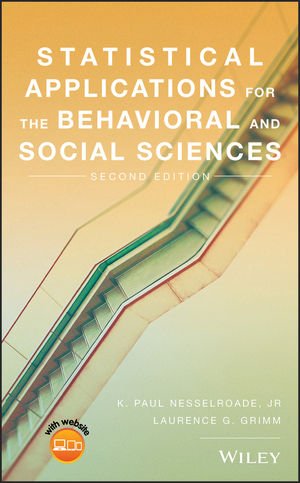(Essay found in Nesselroade & Grimm, 2019; pg. 404)

John Tukey (1915–2000) was born in New Bedford, Massachusetts. He was homeschooled by his educator parents who responded to his numerous questions not with direct answers but with clues and follow-up questions designed to help him solve his own problems (McCullagh, 2003). This philosophy produced a remarkable student, culminating in two degrees from Brown University in Chemistry and a Ph.D. in mathematics from Princeton in 1939, where he was asked to stay-on as a professor upon graduation. He stayed at Princeton for his entire career.
During World War II he decided to serve the war effort in the Fire Control Research Office (think “artillery fire”) where he tackled many mathematical issues related to ballistics, gun and artillery control, and range firing (e.g., Sande, 2001). After the war, he continued to stay involved in several government projects including the enrichment of uranium and the development of the U2 spy plane, even representing the U. S. Government at a conference in Geneva addressing the discontinuance of nuclear Weapons testing.
Concurrent with his academic career he also worked for AT&T Bell Laboratories where, among other contributions, he created several neologisms including ‘bit’ for binary digit and perhaps most notably ‘software’ as a contrast to hardware (e.g., Leonhardt, 2000). Over the course of his career, Tukey was awarded, among other recognitions, entrance into the prestigious National Academy of Sciences, the National Medal of Science from President Nixon, and the Medal of Honor from the Institute of Electrical and Electronic Engineers.
As an academic, Tukey’s contributions were numerous and significant (pun intended!), publishing and producing both individually and collaboratively in the fields of chemistry, mathematics, environmental research, probability and statistics (forming and chairing Princeton’s Department of Statistics in 1966), and the philosophy (McCullagh, 2003). He also served as a scientific advisor to several presidents and was tapped to be a critical reviewer of influential notable publications such as the Kinsey Report (1953) and Silent Spring (Carlson, 1962). His contributions to the field of statistics are numerous. Some of his most notable statistical creations include the Box-and-Whisker Plot, the Stem-and Leaf Diagram, and the Tukey Range Test (we know it as Tukey’s HSD Test). These tools will likely be long-lasting contributions to the field of behavioral and social statistics.
Find this and other spotlights on important statisticians in the Nesselroade & Grimm textbook.
Carson, R. (1962). Silent Spring. Boston: Houghton Mifflin.
Kinsey, A. C., Pomeroy, W. B., Martin, C. E., & Gebhard, P. H. (1953). Sexual behavior in the human female. Saunders.
Leonhardt, D. (2000, July 28). John Tukey, 85, Statistician; Coined the Word ‘Software’. Retrieved from http://www.nytimes.com/2000/07/28/us/john-tukey-85-statistician-coined-the-word-software.html
McCullagh, P. (2003). John Wilder Tukey. Biological Memoirs of Fellows of the Royal Society, 49, 537-555. Retrieved from http://rsbm.royalsocietypublishing.org/content/roybiogmem/49/537.full.pdf
Sande, G. (2001, July). John Wilder Tukey. Physics Today, 54(7), 80. Retrieved from http://physicstoday.scitation.org/doi/10.1063/1.1397408?journalCode=pto